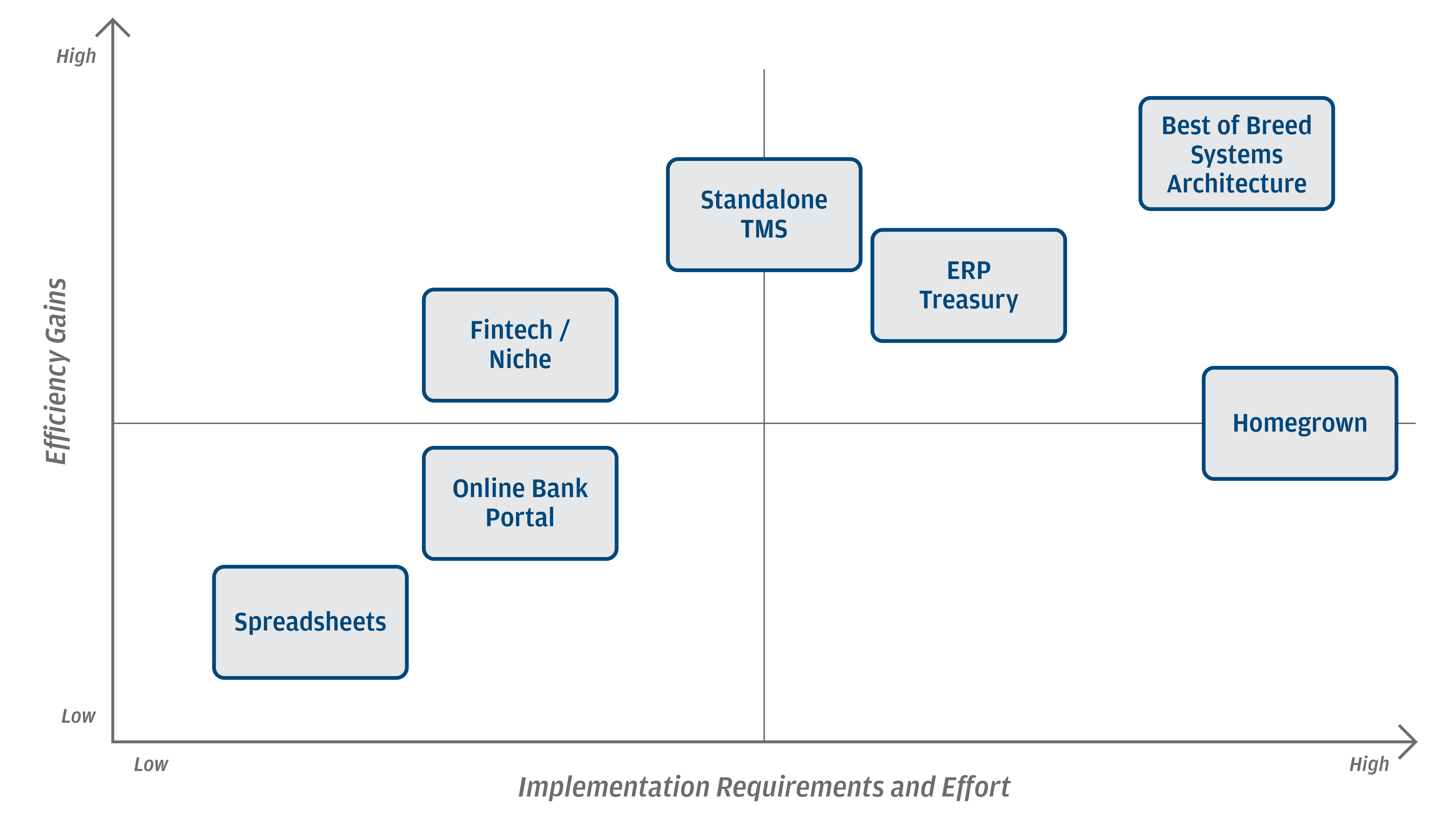From startups to legacy brands, you're making your mark. We're here to help.
-
Innovation Economy
Fueling the success of early-stage startups, venture-backed and high-growth companies.
-
Midsize Businesses
Keep your company growing with custom banking solutions for middle market businesses and specialized industries.
-
Large Corporations
Innovative banking solutions tailored to corporations and specialized industries.
-
Commercial Real Estate
Capitalize on opportunities and prepare for challenges throughout the real estate cycle.
-
Community Impact Banking
When our communities succeed, we all succeed. Local businesses, organizations and community institutions need capital, expertise and connections to thrive.
-
International Banking
Power your business' global growth and operations at every stage.
Key Links
Prepare for future growth with customized loan services, succession planning and capital for business equipment.
-
Asset Based Lending
Enhance your liquidity and gain the flexibility to capitalize on growth opportunities.
-
Equipment Financing
Maximize working capital with flexible equipment and technology financing.
-
Trade & Working Capital
Experience our market-leading supply chain finance solutions that help buyers and suppliers meet their working capital, risk mitigation and cash flow objectives.
-
Syndicated Financing
Leverage customized loan syndication services from a dedicated resource.
-
Commercial Real Estate
Capitalize on opportunities and prepare for challenges throughout the real estate cycle.
-
Employee Stock Ownership Plans
Plan for your business’s future—and your employees’ futures too—with objective advice and financing.
Key Links
Serving the world's largest corporate clients and institutional investors, we support the entire investment cycle with market-leading research, analytics, execution and investor services.
-
Institutional Investors
Putting your long-tenured investment teams on the line to earn the trust of institutional investors.
-
Markets
Direct access to market leading liquidity harnessed through world-class research, tools, data and analytics.
-
Prime Services
Helping hedge funds, asset managers and institutional investors meet the demands of a rapidly evolving market.
-
Global Research
Leveraging cutting-edge technology and innovative tools to bring clients industry-leading analysis and investment advice.
-
Securities Services Solutions
Helping institutional investors, traditional and alternative asset and fund managers, broker dealers and equity issuers meet the demands of changing markets.
Key Links
Providing investment banking solutions, including mergers and acquisitions, capital raising and risk management, for a broad range of corporations, institutions and governments.
-
Center for Carbon Transition
J.P. Morgan’s center of excellence that provides clients the data and firmwide expertise needed to navigate the challenges of transitioning to a low-carbon future.
-
Corporate Finance Advisory
Corporate Finance Advisory (“CFA”) is a global, multi-disciplinary solutions team specializing in structured M&A and capital markets. Learn more.
-
Development Finance Institution
Financing opportunities with anticipated development impact in emerging economies.
-
Sustainable Solutions
Offering ESG-related advisory and coordinating the firm's EMEA coverage of clients in emerging green economy sectors.
-
Mergers and Acquisitions
Bespoke M&A solutions on a global scale.
-
Capital Markets
Holistic coverage across capital markets.
Your partner for commerce, receivables, cross-currency, working capital, blockchain, liquidity and more.
Key Links
A uniquely elevated private banking experience shaped around you.
-
Banking
We have extensive personal and business banking resources that are fine-tuned to your specific needs.
-
Investing
We deliver tailored investing guidance and access to unique investment opportunities from world-class specialists.
-
Lending
We take a strategic approach to lending, working with you to craft the right financing solutions matched to your goals.
-
Planning
No matter where you are in your life, or how complex your needs might be, we’re ready to provide a tailored approach to helping your reach your goals.
Whether you want to invest on your own or work with an advisor to design a personalized investment strategy, we have opportunities for every investor.
-
Invest on your own
Unlimited $0 commission-free online stock, ETF and options trades with access to powerful tools to research, trade and manage your investments.
-
Work with our advisors
When you work with our advisors, you'll get a personalized financial strategy and investment portfolio built around your unique goals-backed by our industry-leading expertise.
-
Expertise for Substantial Wealth
Our Wealth Advisors & Wealth Partners leverage their experience and robust firm resources to deliver highly-personalized, comprehensive solutions across Banking, Lending, Investing, and Wealth Planning.
Explore a variety of insights.
Key Links
Insights by Topic
Explore a variety of insights organized by different topics.
Key Links
Insights by Type
Explore a variety of insights organized by different types of content and media.
Key Links
We aim to be the most respected financial services firm in the world, serving corporations and individuals in more than 100 countries.
Key Links
- Insights
- Treasury
- Treasury Management
- Is a treasury management system right for you?

By Lauren Dzialo
Associate, Corporate Treasury Consulting, Commercial Banking
By Lauren Dzialo
As your company expands its global reach, its liquidity structures become more complex and its banking providers increase. In response, your treasury and finance teams may consider a treasury management system (TMS) to automate cash management operations and elevate treasury’s strategic footprint. But is a TMS the right tool for your company?
Many treasury and finance organizations assume a TMS can solve all their operational cash management issues and eliminate the need for manual processes. In reality, a TMS provides distinct functions and adds value in specific circumstances.
A TMS can be a useful way to organize your treasury to become more strategically relevant, but for many organizations, it’s not the only path. A critical step in identifying whether a TMS is right for you is understanding the root causes of your treasury’s pain points. Only then can you determine if a TMS will be worth your investment.
If you determine a TMS is your best option, it’s worth noting that the treasury technology landscape is ever evolving. There are many niche alternatives that can alleviate the cost burden and long implementation timelines associated with a traditional TMS.

The chart depicts options in the treasury technology landscape. The x axis shows implementation requirements and effort from low to high. The y axis shows and the efficiency gains from low to high.
Spreadsheets have the lowest implementation requirements and effort and the lowest efficiency gains; online bank portal is slightly higher for both. Fintech/Niche has low implementation requirements and effort with higher efficiency gains. A standalone TMS has a medium level of implementation requirements and effort with higher efficiency gains. ERP Treasury is high in both categories. Best of Breed has the highest implementation requirements and effort and highest efficiency gains. Home-grown has high implementation requirements with medium level efficiency gains.

Treasury management system capabilities
Some of the key functionalities of a full-suite TMS include:
- Cash positioning, forecasting and liquidity management
- Electronic Bank Account Management, bank relationship management and bank fee analysis
- Payments
- Risk management and derivatives
- Trade solutions
- Investments and debt management
- Accounting and reconciliation
- In-house bank, payment factory
- Connectivity
Implementing a TMS is a massive undertaking—it can take up to three months to get one entity or module up and running. Achieving full functionality with a TMS can take anywhere from 12 to 18 months. Your technology team should be engaged early in the selection process for successful design specifications, implementation and rollout.
The TMS technology best suited for your treasury organization is based on many factors, including:
- Pricing
- IT costs and complexity
- Compatibility with existing systems
- Implementation lift
- Speed and security
- Upgrade management
Treasury challenges beyond the scope of a TMS
While a TMS can provide robust functionality, there is no substitute for best-in-class employees, processes and existing systems. Although it’s not an exhaustive list, there are three key components of the organization to analyze for outside issues that a TMS won’t solve.
- People: Your organizational structure and delineation of responsibilities can have a major impact on the effectiveness of your cash management practices. A TMS cannot solve issues stemming from:
- Your staff’s skill set and enablement; for example, is the staff assigned goal-driven tasks? What is the staff’s level of common interest?
- The effectiveness of internal parties' communication
- A lack of ownership due to inadequate incentives and ineffective performance management
- Segregation of duties
- Your organization and staff structure’s level of centralization
- Processes and controls: The efficiency, accuracy and level of controls your processes have are core to the treasury organization’s output. Focusing your efforts on controls and processes can often result in positive change without necessitating new technology. A TMS won’t add value to your organization if:
- There is no transition plan or playbook for acquisitions and their accounts and systems.
- Tasks are centered around institutional knowledge and are redundant. For example, a flawed process can cause excessive daily exception items.
- There is lax controls enforcement due to an inadequate understanding of roles and tasks.
- Legacy systems and banking structure: Your existing technology infrastructure and banking setup can enable or inhibit your scalability. They also influence the ease of viewing and moving cash when it’s critical. A TMS has limited benefit if:
- Your banking relationships are spread out among too many accounts or banks. In this case, an account rationalization may help you consolidate cash without the implementation of a TMS.
- There is a suboptimal account structure in place, which requires manual intervention or booking of entries.
- Your enterprise resource system (ERP) has untapped potential. For instance, you may not be using your ERP’s cash management or accounting modules.
- Your existing systems lack connectivity to one another and provide insufficient system functionality to meet your specific business and treasury needs.
- Your technical support requires more experience or availability to make the system usable or your staff hasn’t received proper training on system functionality.
A TMS can be a useful way to organize your treasury to become more strategically relevant, but for many organizations, it’s not the only path. To avoid investing time and money into a TMS that isn’t used to its full potential, you must first analyze your people, processes and technology infrastructure for fixable issues. Leverage trusted relationships, such as those with peer companies, consultants or banking providers to understand your full range of options before you make a final decision.
Related insights

Treasury
Your cash conversion cycle—what it is and how to optimize it
Oct 14, 2025
Discover how the cash conversion cycle impacts business efficiency and learn strategies to optimize cash flow management.

Treasury
Being resilient relies on connected treasury tools
Oct 10, 2025
In the face of a variety of obstacles, businesses are looking to improve their resiliency. Having a trusted treasury partner can help.

Treasury
Three trends revolutionizing treasury in the Middle East
Oct 03, 2025
The Middle East's corporate treasury landscape is evolving rapidly. Discover three trends fueling this progress through visionary changes, economic strategies and tech advancements.

Treasury
Optimize your inventory strategy to enhance capital efficiency
Oct 03, 2025
Learn how inventory optimization aligns with treasury strategy to improve capital efficiency and cash flow.

Treasury
Navigating payables: Strategic insights into invoice automation
Oct 02, 2025
Discover how invoice automation can streamline invoice processing, enhance your back office and provide strategic value for your company.

Treasury
Data modernization: Harnessing the power of treasury data
Sep 24, 2025
Discover how modern data strategies can revolutionize your treasury operations, enhance financial management and drive strategic decision-making.

Payments
Avis Budget Group’s road to treasury modernization with Oracle and J.P. Morgan
Sep 04, 2025
Here’s how Avis Budget Group transformed its treasury, cut significant costs, automated payments and gained near real-time insights into its cashflow using an integrated banking solution from Oracle and J.P. Morgan Payments—all in a few weeks.

Treasury
5 strategies to help corporate treasurers achieve clarity
Aug 21, 2025
As treasurers face pressure to accomplish more with less time, we suggest tools that can help automate manual tasks while increasing visibility and control of their cash management systems.
You're now leaving J.P. Morgan
J.P. Morgan’s website and/or mobile terms, privacy and security policies don’t apply to the site or app you're about to visit. Please review its terms, privacy and security policies to see how they apply to you. J.P. Morgan isn’t responsible for (and doesn’t provide) any products, services or content at this third-party site or app, except for products and services that explicitly carry the J.P. Morgan name.